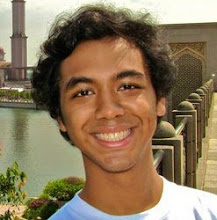The month of August is always a special day for Indonesians. On August 17, 1945, after centuries of struggle, the people of Indonesia declared their independence from colonial rule. It is celebrated annually with various activities, ranging from the stand-still serious to the let-everything-loose. As the president leads the official ceremony in the Istana Negara, little kids are concentrating on nibbling the kerupuk above their heads and men are playing soccer in their wives’ negligee, all for the good time and eyes set on the prize. This year, I guess things will be even more festive after the #indonesiaunite movement and the wave of nationalism that followed. I am very optimistic on that upcoming event, but a recent personal discovery gave me another direction to look at.
During August 12-14, FKUI (Faculty of Medicine, University of Indonesia) hosted a photo exhibition, organized by the alumni society, about the role of its community during the fight for national independence. It highlighted the contribution of the Salemba community, named after the street in front of the university, in the decades before Soekarno read the declaration.
A short history lesson will do here, although it might get a little fuzzy. FKUI has been around for more than a century, longer than the University of Indonesia itself. It was not named FKUI until the 1950’s. It bore many name, many of which escaped my memory, but I do remember Sekolah Dokter Djawa (Javanese Doctor School), STOVIA (School tot Opleiding van Indische Artsen, 1989), and Geneeskundige Hogeschool (GHS, 1927). The students of STOVIA pioneered and played a prominent role in the national awakening, which later led to the nation’s independence. It is only appropriate that the STOVIA building is now made the National Awakening Museum. After the school, then GHS, moved to its current Salemba site, its defiance grew and its students were deeply involved in the process to freedom.
I visited the exhibition on August 13, and my grandparents tagged along. The lobby of the faculty building was decorated in an antique minimalist setting with sheets of elegant batik cloths hanging from the walls. Historical black-and-white photos were displayed on the support columns and old stands. Those pictures hold more than millions of words and emotions.
There were pictures of dr. Cipto Mangunkusumo, after whom the school’s teaching hospital is named. He founded the Indische Partij and argued for an independent Indonesia. Another well-known figure was dr. Abdulrahman Saleh, also called Pak Karbol. A day after the declaration of independence, radio stations were shut down by the Japanese; in response, Pak Karbol assembled a radio transmitter in the physiology laboratory to spread the good news everywhere. The laboratory is still in use for medical students. Later, he established Radio Republik Indonesia (RRI). He is also a military pilot in AURI (RI Air Force).
Other figures were also featured in the exhibition. There were dr. Leimena, dr. Latumenten, and dr. Kariadi. Several doctors’ name don’t appear often in history books, but their descendants are now holding various positions. My grandparents told me more about them, but I think they will have to repeat that.
The exhibition showed not only graduates, but also people who were admitted into the school but didn’t finish it. Mohammad Roem, of the Roem-Royen Agreement, transferred to the law school. Soedarpo Sastrosatomo was fired from the school because he refused to obey Japanese order to shave his head. He then joined the negotiators in the Linggarjati Agreement. After the country stabilized, he founded Samudra Indonesia, a shipping company that grew powerful.
A couple pictures or two captured the campus itself during the years. The building was astonishingly majestic, and it still is today. My grandma shared a little story of how the students, including her, used to take shortcuts by climbing over a short wall, and at one time was caught by a professor who just laughed at the scene. A picture immortalized the patriotic scene in which students, doctors, and nurses staged a walk-out from the hospital after it was invaded and taken over by the Dutch.
The exhibition was some kind of an epiphany to me. I know that FKUI has a history like no other school, but only yesterday I grasped the whole thing. I would have to thank the organizers who set up the exhibition, and my grandparents, who added so many little bits of interesting information about the people and events in the picture. (It turned out that my grandpa organized a past Dies Natalis, and met several historical figures to enrich a stage play he planned for the occasion). Considering its past, it would be great if FKUI compiles its deep history and the stories of its figures. This exhibition made me a proud Indonesian and a motivated FKUI student; imagine what such book could make us all?


No comments:
Post a Comment